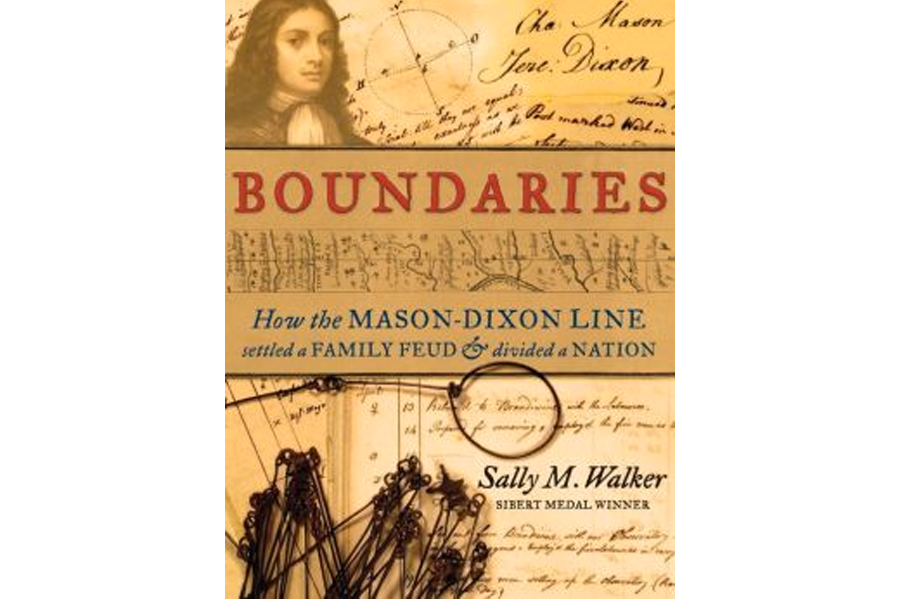(Candlewick, 208 pp.)
While the Mason-Dixon Line is most often thought of as a division between North and South along the Maryland-Pennsylvania border, author Sally Walker goes to great lengths to provide in-depth background about the family feuds, remarkable surveying, and science involved in setting this famous boundary.
EXCERPT:
“During the early decades of the nineteenth century, perceptions of the origins of the Mason-Dixon Line had already blurred. In fact, in the 1830s, a number of newspapers printed short articles that reminded readers of the line’s roots in a dispute between two feuding colonies. They did so because Mason and Dixon’s line had begun to act as a boundary not just between states but between two new identities, and these new perceptions altered the lives of millions of Americans.
“As tensions increased between northern and southern states, particularly issues concerning taxation of goods, people increasingly regarded Mason and Dixon’s line as the division between the North and the South – not only geopolitically but also politically."




